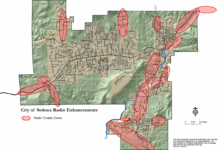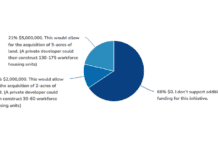As Sedona City Council begins budget discussions this May, councilors may wrestle with trying to preserve subsidizing outside agencies while trying to maintain city services.
The city’s fiscal year 2009/10 budget is still in its earliest phases, but in January, council directed staff to preserve the city’s subsidies to local organizations, Interim City Manager Alison Zelms said.
“It’s up in the air,” Zelms said, on whether or not the question of cutting funding to the organizations will come to council.
“It’s unlikely that we’ll see increases to outside agencies at this point and it would be difficult to make that happen,” she said.
According to Mayor Rob Adams, it’s time for the city to reconsider what it subsidizes, while looking to balance the budget and protect the reserve fund.
Council must look at each organization and evaluate its importance to the community as well as how efficiently it operates.
“Everyone must be willing to tighten their belts and be realistic about funding that is available,” he said. Topping the city’s list of outside funding is the Sedona-Oak Creek Chamber of Commerce. In fiscal year 2008/09, the chamber received $786,515 from the city, which it uses to operate three divisions — destination market, visitor center and film office.
On Jan. 27, council approved $100,000 of that in one-time emergency funds for marketing the spring tourist season and $58,888 was for hotel occupancy growth. The chamber gets 30 percent of the increase in bed tax from the previous year.
Of the $786,515, a total of $251,814 was contracted with the chamber for destination marketing to promote Sedona as a premier vacation destination.
The city’s investment makes up 42 percent of that portion of the chamber’s budget.
According to Chamber CEO and President Jennifer Wesselhoff, the $251,814 goes toward advertising in print, Internet and TV and direct marketing in Phoenix and billboards.
“In my opinion, destination marketing is a return on investment for the city. Our goal is to increase visitor spending in Sedona,” Wesselhoff said, and maintain the $1.7 million tourism brought the city in bed tax last year.
Last year, visitors paying for hotels rooms brought in $3.4 million on bed and sales tax for the rooms.
Tourism spending altogether brought in $10 million to the city, which accounted for 75 percent of its general fund — $13 million — in 2009, Wesselhoff said.
Of the $786,515, $272,613 was contracted for the chamber’s visitor center. The city’s investment makes up 61 percent of the center’s operating budget.
The center is open 360 days a year with a goal to get people to stay longer and spend more.
An important component at the center is to teach visitors to tread lightly on the land, Wesselhoff said. Staff instructs visitors to stay on trails, not to litter and points out recycling bins.
Each year, the visitor center assists more than 250,000 walk-ins, answers 20,000 phone calls and 2,500 e-mails, Wesselhoff said.
The chamber’s third division, the film office, which focuses on films, commercials and photo shoots in Sedona, received $103,200 from the city. The city funds 99 percent of that office’s budget.
The funds are used for trade shows, advertising, Web site development, managing film crews, fielding inquires and marketing to potential filmmakers and producers.
It’s too early to tell if the city will have to cut any chamber funding and Wesselhoff hopes it won’t come to that.
A decrease in marketing would lead to a decrease in tourists, which brings a drop in sales and bed tax, which means decreased services from the city.
“It trickles down through the entire community,” Wesselhoff said. “Tourism is Sedona’s economic generator. Investing in tourism is also fundamental to the quality of life which we all enjoy.”
Alison Ecklund can be reached at 282-7795, ext. 125, or e-mail
aecklund@larsonnewspapers.com





















